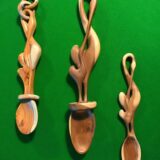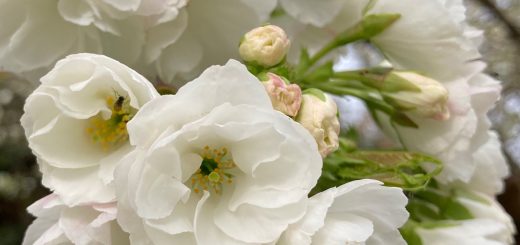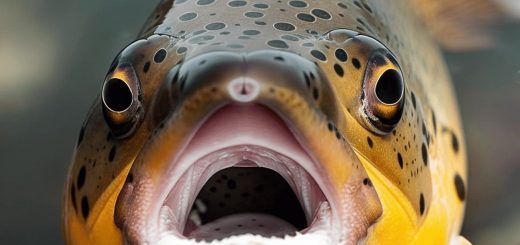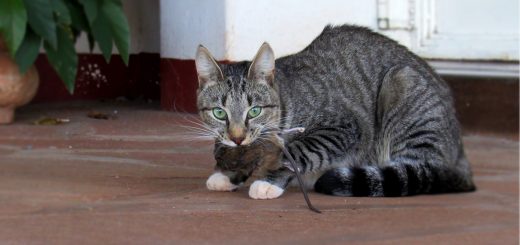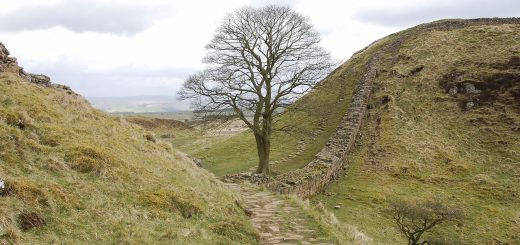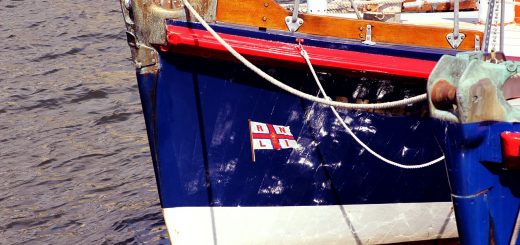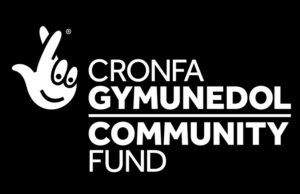New Improved Strumble Head Experience
Scroll down for English version
Paneli newydd sbon yn cael eu harddangos ym Mhen-caer

Yn y llun (o’r chwith i’r dde) mae: Ffotograffydd Ymddiriedolaeth Môr Cymru, Ken Barnett; Swyddog Dehongli Awdurdod Parc Cenedlaethol Arfordir Penfro, Rhowan Alleyne; a Rheolwr Prosiect Ymddiriedolaeth Môr Cymru, Holly Dunn.
Mae cyfres o baneli dehongli newydd trawiadol wedi cael eu gosod ym Mhen-caer yn ddiweddar yn dilyn cydweithrediad rhwng Awdurdod Parc Cenedlaethol Arfordir Penfro ac Ymddiriedolaeth y Môr Cymru, elusen cadwraeth forol o Wdig.
Mae Pen-caer yn croesawu miloedd o ymwelwyr bob blwyddyn, gyda golygfeydd godidog o’r goleudy, carpedi o ludlys arfor, clustog Fair a grug, a bywyd gwyllt syfrdanol.
Mae hen adeilad cadw gwyliadwriaeth o’r Ail Ryfel Byd yn sefyll ar y clogwyn, lle gall ymwelwyr fwynhau set o baneli dehongli newydd sy’n darparu gwybodaeth am dirwedd a bywyd gwyllt yr ardal. Ariennir y paneli gan Gronfa Pethau Pwysig Croeso Cymru.
Dywedodd Rhowan Alleyne, Swyddog Dehongli Awdurdod y Parc Cenedlaethol: “Pan ddechreuon ni greu’r arddangosfeydd hyn, roedden ni wir eisiau helpu ymwelwyr i ddod o hyd i fywyd hudolus y môr yn Pen-caer ac iddyn nhw gallu adnabod yr hyn maen nhw’n eu gweld. Pwy well i weithio gyda nhw nag Ymddiriedolaeth y Môr Cymru, sydd allan yn monitro’r bywyd gwyllt yma bron bob dydd. Rwy’n ddiolchgar iawn i Holly Dunn a’i thîm o wirfoddolwyr am rannu eu gwybodaeth amhrisiadwy.”
Mae Pen-caer yn lleoliad sy’n cael ei ddefnyddio gan Ymddiriedolaeth y Môr yng Nghymru ar gyfer eu prosiect Photo-ID llamhidyddion, sy’n flaenllaw yn fyd-eang, lle mae gwirfoddolwyr yn treulio sawl diwrnod yr wythnos yn arolygu ac yn recordio gweld aelodau o deulu’r morfil.
Mae dros 200 o lamhidyddion wedi’u nodi hyd yma, ac mae’r gronfa ddata ffotograffig a luniwyd gan Ymddiriedolaeth y Môr Cymru yn helpu gwyddonwyr morol i ddeall pa mor bell mae llamhidyddion yn teithio, a ble maen nhw’n bwydo ac yn magu.
“Yr hyn sy’n gwneud Pen-caer mor arbennig ar gyfer bywyd môr yw ras y llanw,” meddai Rheolwr Ymddiriedolaeth y Môr, Holly Dunn, “mae’r cerrynt cryf yn corddi’r maetholion sy’n bwydo plancton. Mae pysgod bach fel llymrïaid yn bwydo ar y planctonau, ac mae llawer o rywogaethau eraill fel mecryll, gwylogod, llamhidyddion a morfilod pigfain yn bwydo ar lymrïaid. Mae Pen-caer yn lle gwych i fwydo.”
Mae un o wirfoddolwyr Ymddiriedolaeth y Môr, Ken Barnett, wedi treulio dros ddegawd yn arsylwi ac yn tynnu lluniau o’r bywyd gwyllt ym Mhen-caer, a dywedodd: Rwyf wedi cwrdd â miloedd o bobl yn ystod fy arolygon ym Mhen-caer ac rwyf wrth fy modd yn rhannu’r gwybodaeth ag eraill, yn enwedig plant ifanc, a fydd, wedi’r cyfan, yn gofalu am fyd natur wrth i amser fynd yn ei flaen.
“Fel adnodd addysgol, mae’r paneli dehongli newydd hyn yn eithriadol ac yn rhoi profiad cadarn i ymwelwyr. Mae wedi bod yn anrhydedd cymryd rhan yn y prosiect ac rwy’n cymeradwyo Awdurdod Parc Cenedlaethol Arfordir Penfro am eu darpariaeth.”
Cafodd hen adeilad cadw gwyliadwriaeth Pen-caer, a oedd unwaith yn orsaf gyfathrebu arbrofol â adeiladwyd yn ystod yr ail Ryfel byd, ei achub rhag ei ddymchwel yn y 1980au ar ôl iddo gael ei brynu gan Awdurdod Parc Cenedlaethol Arfordir Penfro. Bellach, mae’n safle gwerthfawr ar gyfer astudio mudo adar a bywyd y môr.
Mae Awdurdod y Parc Cenedlaethol hefyd yn rheoli ac yn berchen ar oddeutu 10 erw o rostir morol ym Mhen-caer. Mae’n gynefin prin sy’n bwysig i flodau gwyllt, pryfed, ymlusgiaid ac adar.
Mae’r paneli dehongli newydd yn rhoi gwell dealltwriaeth i ymwelwyr o’r cyfoeth a’r amrywiaeth anhygoel o fywyd gwyllt y gellir eu gweld ar y clogwyni ac yn y dyfroedd o amgylch Pen-caer.

A set of new interpretation panels have recently been installed at Strumble Head following a collaboration between the Pembrokeshire Coast National Park Authority and Goodwick-based marine conservation charity Sea Trust Wales.
Strumble Head welcomes thousands of visitors each year, drawn by scenic views of the lighthouse, carpets of sea campion, thrift and heather, and awe-inspiring wildlife.
Perched on the cliff is an old Second World War lookout building, where visitors can now enjoy a set of new interpretation panels, funded by Visit Wales’s Brilliant Basics Fund and providing information about the landscape and wildlife of the area.
National Park Authority interpretation officer Rhowan Alleyne said: “When we started to create these displays, we really wanted to help visitors spot the magical sealife at Strumble and recognise what they see. Who better to work with than Sea Trust Wales, who are out monitoring the wildlife here almost every day. I’m so grateful to Holly Dunn and her team of volunteers for sharing their invaluable knowledge.”
Strumble Head is a location used by Sea Trust Wales for its porpoise Photo-ID project, in which volunteers spend several days a week surveying and recording cetacean sightings.
More than 200 porpoises have been identified so far, and the photographic database built up by Sea Trust Wales helps marine scientists to understand how far porpoises travel, and where they feed and breed.
“What makes Strumble Head so special for sea life is the tidal race,” said Sea Trust Wales manager Holly Dunn. “The strong currents churn up nutrients that feed plankton. Small fish like sand eels feed on the planktons, and sand eels feed many other species, from mackerel to guillemots, to porpoise, right up to minke whales. Strumble Head is a spectacular feeding ground.”
Sea Trust volunteer Ken Barnett has spent over a decade observing and photographing the wildlife at Strumble Head and said: “I’ve met thousands of people during my surveys at Strumble and had a love of passing on knowledge to others, especially young children, who after all will be the caretakers of nature as time moves on.
“As an educational tool, these new interpretation panels are exceptional and complete the Strumble experience for visitors.”
Strumble Head lookout was saved from demolition in the 1980s after it was bought by Pembrokeshire Coast National Park Authority, becoming a valuable site for the study of bird migrations and sealife.
The National Park Authority also owns and manages about 10 acres of marine heathland at Strumble Head, which is a rare habitat important for wildflowers, insects, reptiles and birds.
The new interpretation panels give visitors a better understanding of the amazing wealth and variety of wildlife that can be spotted on the cliffs and in the waters around Strumble Head.










